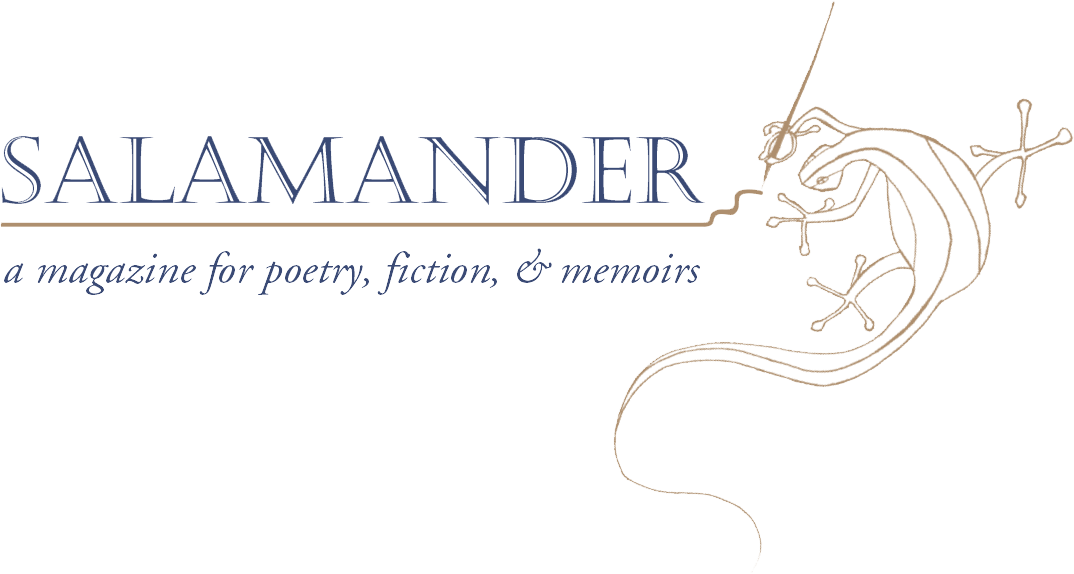The son is not the center of “The Way It Goes” but rather the starting point, and the poem becomes a chronicle of the elderly woman’s diminishing faculties. It is poignant and yet not without humor, a subtle playfulness that comes with perspective. Elegies can reduce the reader to tears, but this is not Hammond’s strategy.
“The Magic Dragon Missing His Mate” is a gem as well as a tribute to Hammond’s parents’ marriage. Here, the object of meditation is a photograph, one that once contained both parents, as life did—“An old black and white photo [that] has been ripped in half,//vertically.” Hammond’s father, who used to puff on his glasses and then polish them, is the Magic Dragon, and in the photograph:
…His hand is missing.
It’s in the torn-off part, out in the ether holding his mate’s.
It’s common for poems to contemplate old photographs as artifacts of nostalgia or clues in a quest; Hammond turns this tradition on its head with the closing couplet:
None of this is true. The photo doesn’t exist.
This is just the way it is.
Hammond is ultimately an optimist who may be privileged but never smug or unaware of other, less fortunate lives. She opens with marriage, and throughout the collection she explores this union, her own, that of her parents, and marriage in general. She is far too wise to present marriage in a fairy-tale light. But marriage, in Entering History, is sacred or a sacrament, and the book closes where it began, except that the poet is now “In Bed with an Old Man.” She includes the currency of today—Viagra (they don’t use it) and laptops (“perhaps the new safe sex”), but she also references Lester Lanin, the bandleader whom her husband watched on TV as a kid, and returns to the beginnings of her own marriage, which began with “a double bed”:
You may not be familiar with them.
They predate Queens, which predated Kings,
and were themselves an upgrade of twin beds
for married couples, as seen in 1930s movies.
The playful doubleness of her language, the way this gesture returns to the title poem and simultaneously evokes the journey she and her reader have taken, is testament to Hammond’s strengths. The 1930s-esque movies reference and what follows, “the rest, oh, the rest,/you with your eye to the keyhole, it is so sweet”—works because of the groundwork she’s laid from the beginning, shifting from the vast to the minute quickly, with a precision of language and overall structure that lingers long after one closes Entering History.
Jacqueline Kolosov‘s poetry and prose have recently appeared in Boulevard, The Southern Review, The Sewanee Review, and Prairie Schooner. Her third poetry collection is Memory of Blue (Salmon, 2014). She coedited Family Resemblance: An Anthology and Exploration of 8 Hybrid Literary Genres which won Foreword’s Gold Medal in Writing (Rose Metal, 2015). She directs the Creative Writing Program at Texas Tech, where she is Professor of English. A native of Chicago, she lives with her family in West Texas.
